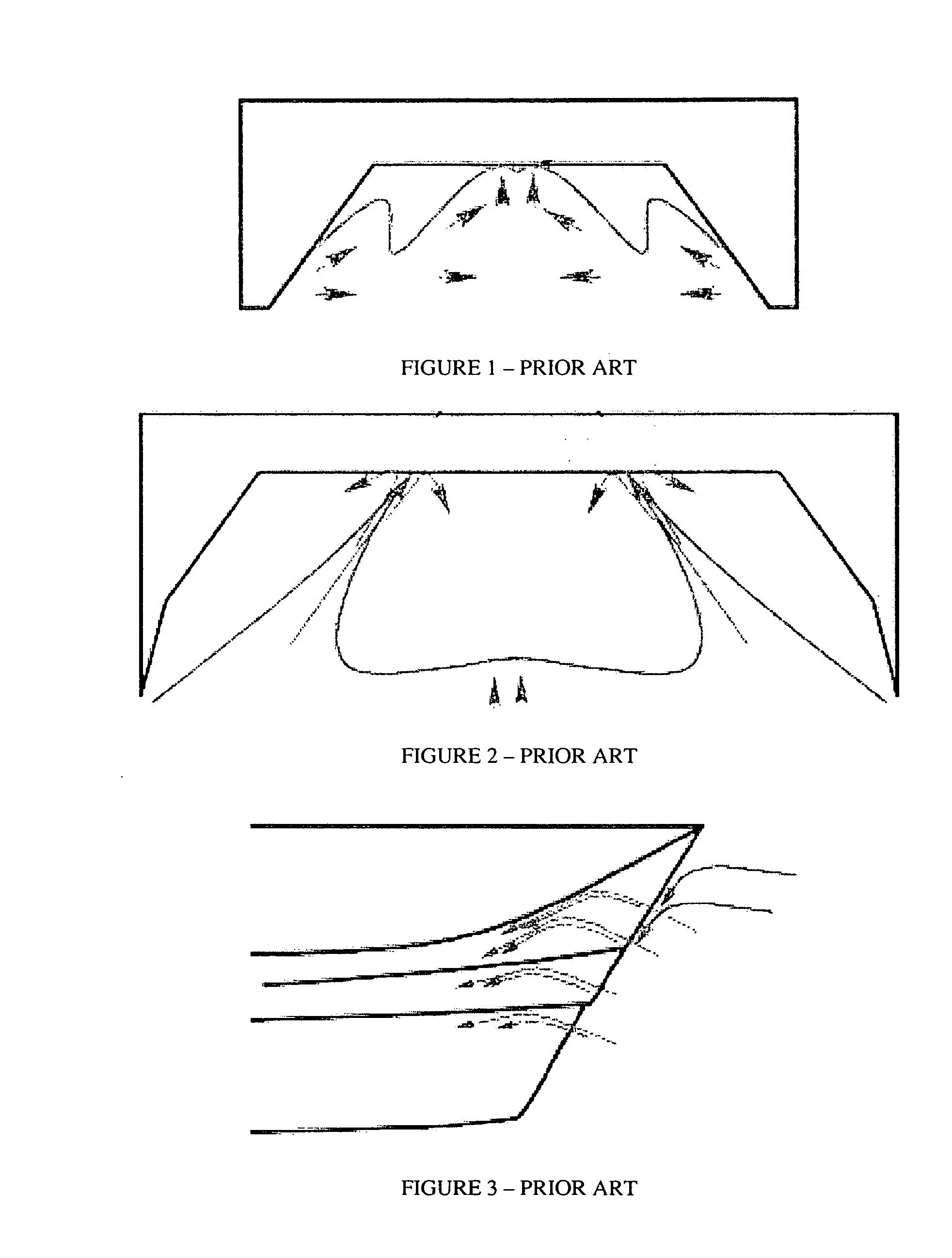This is undesirable because it can make it uncomfortable for those who are onboard the catamaran and can damage the wingdeck of the catamaran.
This problem sometimes occurs because there is inadequate tunnel volume or clearance between the wingdeck and the water to accommodate the
waves which pass between the hulls.
If the strength of the wingdeck is increased so that the wingdeck is able to withstand greater slamming loads, and the overall weight of the catamaran is increased as a consequence of the strengthening, the problem can become even worse.
In some cases it is a lack of reserve
buoyancy or overloading in the bows that will cause a catamaran to
pitch more than it should and therefore drive the wingdeck down into the
waves and cause slamming against the wingdeck.
Planing power catamarans do create
aerodynamic lift at higher speeds, which softens the ride, however when conditions cause them to come off the plane they are vulnerable to heavy slamming, particularly as many of them have very little or no wingdeck clearance when at rest.
Whilst the
noise and dramatically increased structural loads are the obvious effects of low wingdeck clearance and tunnel volume, there are some other less obvious effects which slow the vessel and decrease
fuel efficiency.
This causes drag by increasing the wetted surface of the vessel, and sometimes causes a kick in the
stern if there is a small slam.
The
resultant drag slows the vessel or places a greater load on the engines of the vessel which results in increased fuel consumption.
This effect can be caused by either the shape of the hulls or by the hulls having too narrow a beam which causes the pressure
waves created by the bow sections to meet too early under the wingdeck rather than aft of the boat.
Unfortunately, it has the
disadvantage of increasing the wetted surface of the vessel dramatically and therefore slowing the vessel, making the vessel more vulnerable to a second wave pooping it (i.e., breaking over its
stern).
It also increases the fuel consumption of the vessel as more power is needed to overcome the wetted surface.
Whilst these do not add to the wetted surface dramatically, they are very noisy and, if they strike a relatively weak area of the wingdeck, they can damage the wingdeck due to the localised nature of the force which they exert on the wingdeck.
Unfortunately, like all design features, there is a different “balanced” wingdeck clearance which is practical for different size vessels.
If the wingdeck clearance of a particular vessel is higher than the balanced clearance for that vessel, the vessel will look silly, the
accommodation which is available on the vessel will be greatly reduced, or the vessel will have too much
windage and will consequently be difficult to manage in a cross wind.
Whilst the mathematical distinction between displacement and planing hulls is much harder to define in power catamarans, the requirements for
seakeeping are not.
Higher bows with their increased
windage have a detrimental effect on the windward ability of a sailing cat as the
windage pushes the bows to leeward.
In particular, the leeward bow of sailing catamarans tends to be depressed.
This will lead to a more severe slam when it does occur and a far more dramatic slowing of the vessel as not only is the wetted surface of the vessel increased, but the vessel will also be required to
climb over the wave rather than slide over it.
Other disadvantages to starting the wingdeck further aft on a power catamaran are reduced
torsional rigidity and increased wetness as the spray off the bows is compressed between the hulls and blown up between them on to the
deck.
Although the
stringer types break up the water reasonably well and stiffen the panels of the wingdeck, they do not provide much reserve
buoyancy.
The wide shallow type were not much good for anything as they just filled the tunnel volume up and provided more flat panels for water to slam against.
Whilst these go some way to breaking the water up and increasing the
buoyancy of the vessel, they often negate the benefits by funnelling the water into the now two smaller tunnels located on either side of the third hull and increasing the velocity of the water when it finally hits the wingdeck panels.
This slows the vessel and increases the power required to maintain the speed of the vessel.
Unfortunately, because of the lack of reserve buoyancy in their small outer bows, wave piercers have a strange corkscrew motion in a quarter following sea and therefore an inclination to suffer wave slap on the outer sections of the
nacelle, which can be both noisy and damaging.
 Login to View More
Login to View More  Login to View More
Login to View More 


